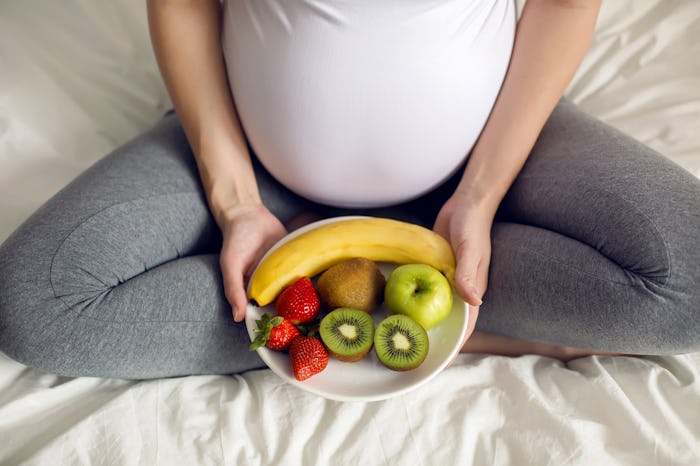Life

Here's How Your Baby Gets All Their Nutrients In The Womb
You can't sneeze in the land of baby making without something or someone telling you what to eat, what vitamins to take, and how everything you touch will make your baby smarter or make them grow an extra limb. But how do nutrients get to your baby in the womb?
The womb is a super cool organ. Think about it — when you're not pregnant, you just have the average, everyday uterus. Sure, once a month it may feel like an angry garden gnome lives inside just to stab you for 24 hours every 28 days, but it's really just a waiting shell.
And once that zygote implants itself? Magic happens. Parts of the uterine wall combine with the developing cells from the embryo, creating an entirely new materno-fetal organ, the placenta, according to The University of New South Wales (UNSW). The placenta does quite a bit, including filtering harmful substances, providing a home for your baby, and protecting the developing fetus from limited exterior influences, Mayo Clinic explained. But its most important function is acting as the basis for the substrate transfer to the fetus, allowing nutrients to feed your baby via your bloodstream, The University of Cambridge noted. How do nutrients get to your baby in the womb? All of your baby's nutrients are delivered to them via your blood. You may have thought you were growing a baby, but they're at least a little vampiric.
While you hear often of the placental barrier, it is actually a fairly thin barrier called the chorion that starts diminishing at the fourth month of pregnancy, according to Columbia University. That is why what you eat, and what you avoid is so important for your baby — the barrier between mother and child is a small one. Your blood needs to be rich and healthy to feed your growing baby via your bloodstream, according to Yale University.
The placenta contains two primary vessels that terminate into the tiny capillaries that flow into the baby from the umbilical cord. All of the fats, vitamins, minerals, oxygen, and fluids are sent to the placenta by the capillaries that formed between the uterus and the placenta, into the umbilical cord, and then into your baby, according to UNSW.
But that's just how your baby gets nutrients in the womb. What about taste? Recent studies conducted by Dr. Julie Menella at the Monell Sense Institute suggested that flavors like anise, vanilla, garlic, and other strong flavors make their way into the amniotic fluid surrounding the baby. Your baby then swallows this fluid several times a day, and the study posited that this early exposure may predict flavor preferences in the future of the child.
Does that mean that if you want your child to be an adventurous eater that you should eat adventurously when pregnant? The study said it's possible. But the crucial factor for your baby thriving is for you to get all the nutrients and calories that you and the baby require, so that your tiny developing vampire has a rich blood diet.